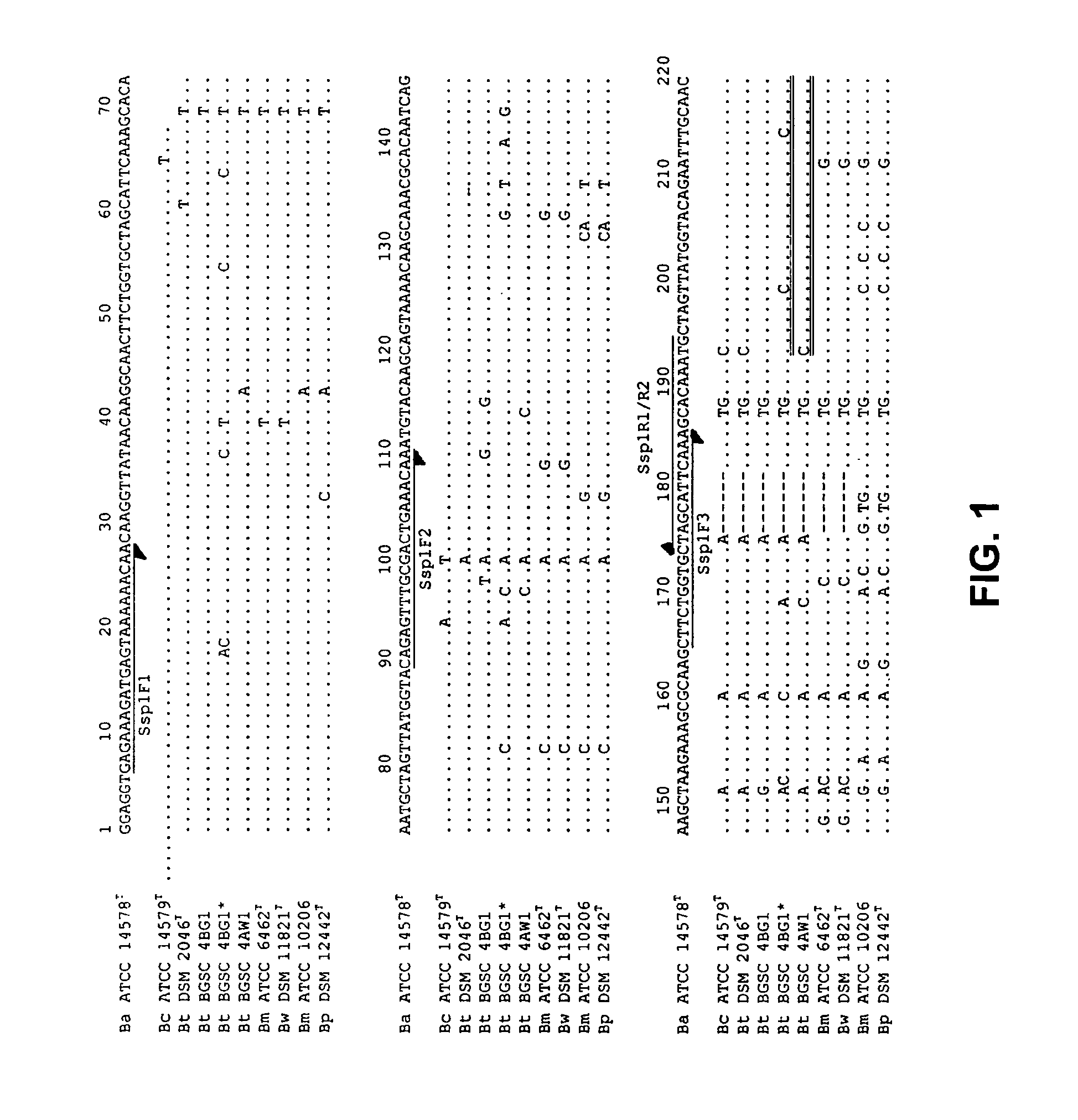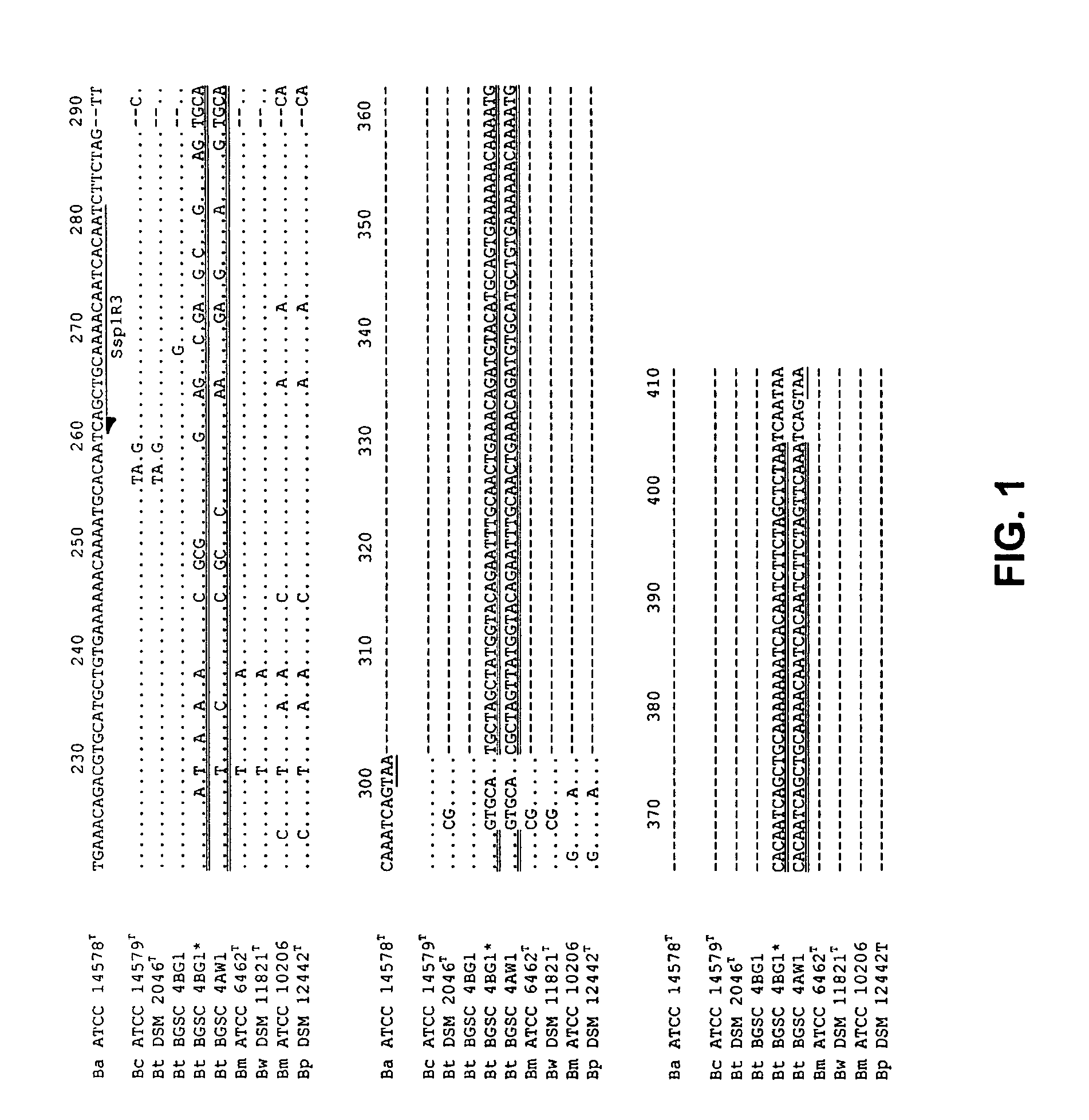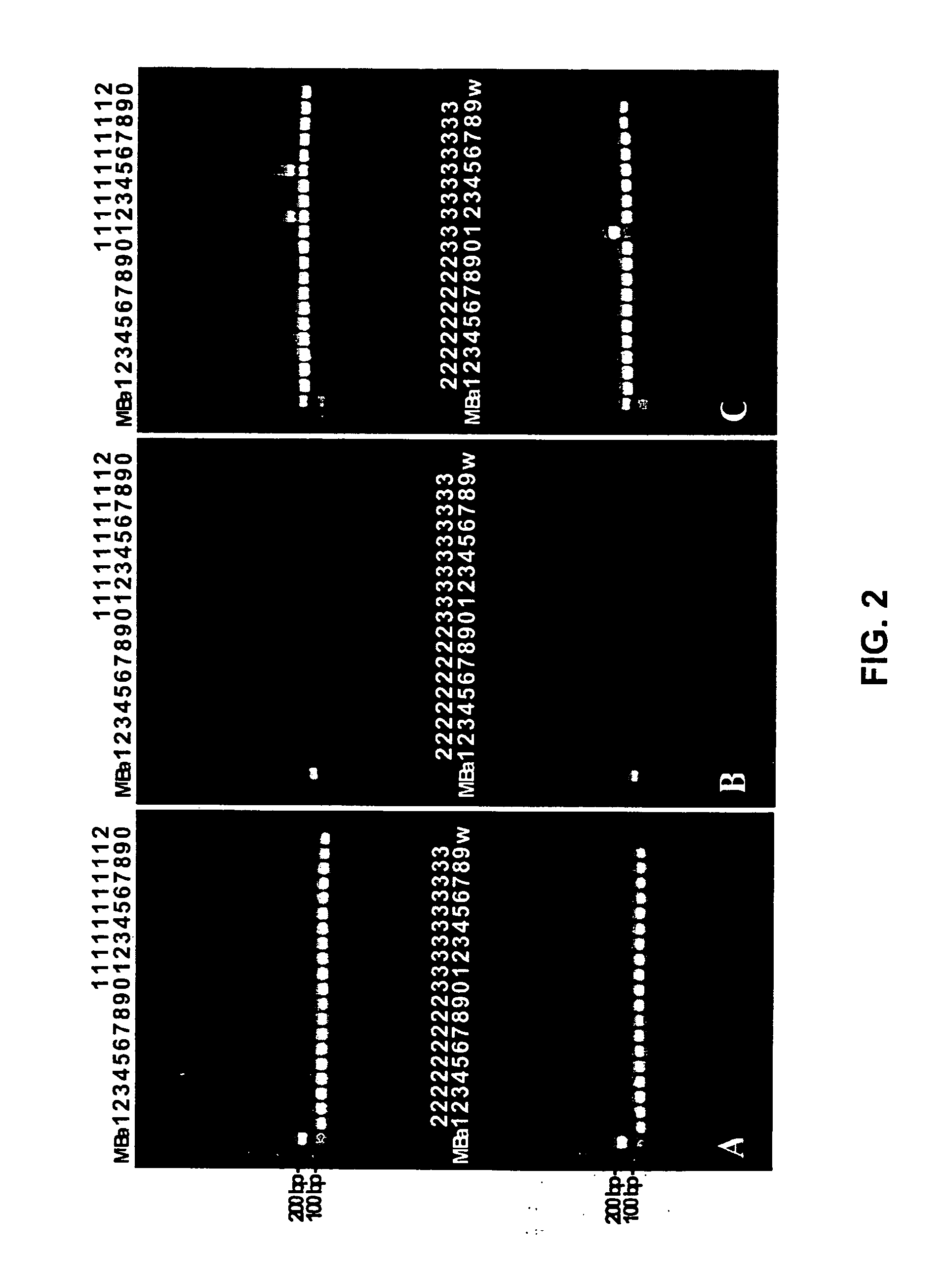Methods and compositions for detecting Bacillus species
a technology of bacillus bacteria and detection methods, applied in the field of detection of bacillus bacteria, can solve the problems of host death, and inability to detect attenuated strains
- Summary
- Abstract
- Description
- Claims
- Application Information
AI Technical Summary
Problems solved by technology
Method used
Image
Examples
example 1
Materials and Methods
[0071] Bacterial strains: A total of 272 bacterial strains were included in this study. Most strains were obtained from culture collections and type strains of most species were included. B. cereus (n=13), B. thuringiensis (n=132), B. mycoides (n=8), B. weihenstephanensis (n=1), B. pseudomycoides (n=1), other known Bacillus spp. (n=64), unknown Bacillus spp. (n=22), and non-Bacillus bacteria (n=17) were used.
[0072] Polymerase Chain Reaction (PCR): Three sets of primers were designed using OLIGO® primer analysis software (MBI Inc., CO, USA) so that one of the primers in each set contains the B. anthracis-specific insertion sequence (see FIG. 1 at approximately position 180; Table 1 provides the primer sequences). Each PCR reaction mixture was prepared in a 50-ml volume, containing 100 ng of template DNA, 0.5 mM of each primers, 200 mM dNTPs, 5 ml of 10× buffer (Qiagen Inc., Valencia, Calif., USA) with 1.5 mM MgCl2 and 2 U of Taq DNA polymerase (Qiagen). The amp...
example 2
Materials and Methods
[0092] Bacterial strains and DNA isolation: A total of 38 bacterial strains used in this second study are shown in Table 7. The strains, except for B. anthracis, were acquired from the American Type Culture Collection (Manassas, Va., USA), Bacillus Genetic Stock Center (Department of Biochemistry, The Ohio State University, Columbus, Ohio, USA) and Deutsche Sammlung von Mikroorganismen und Zellkulturen (Braunschweig, Germany). B. anthracis genomic DNA preparations were a gift from Chung-Ang University Medical College. Genomic DNA from other strains was isolated using the Easy-DNA kit (Invitrogen Corp., CA, USA) according to the manufacturer's protocol. DNA concentrations were determined spectrophotometrically and diluted to 10 ng μl−1 in sterile distilled water. Both the quality and quantity of the DNA were evaluated following electrophoresis in a 0.7% agarose gel containing ethidium bromide (0.5 μg ml−1).
TABLE 7Bacterial strains used in this study and their ...
PUM
| Property | Measurement | Unit |
|---|---|---|
| Length | aaaaa | aaaaa |
| Size | aaaaa | aaaaa |
| Fluorescence | aaaaa | aaaaa |
Abstract
Description
Claims
Application Information
 Login to View More
Login to View More - R&D Engineer
- R&D Manager
- IP Professional
- Industry Leading Data Capabilities
- Powerful AI technology
- Patent DNA Extraction
Browse by: Latest US Patents, China's latest patents, Technical Efficacy Thesaurus, Application Domain, Technology Topic, Popular Technical Reports.
© 2024 PatSnap. All rights reserved.Legal|Privacy policy|Modern Slavery Act Transparency Statement|Sitemap|About US| Contact US: help@patsnap.com










